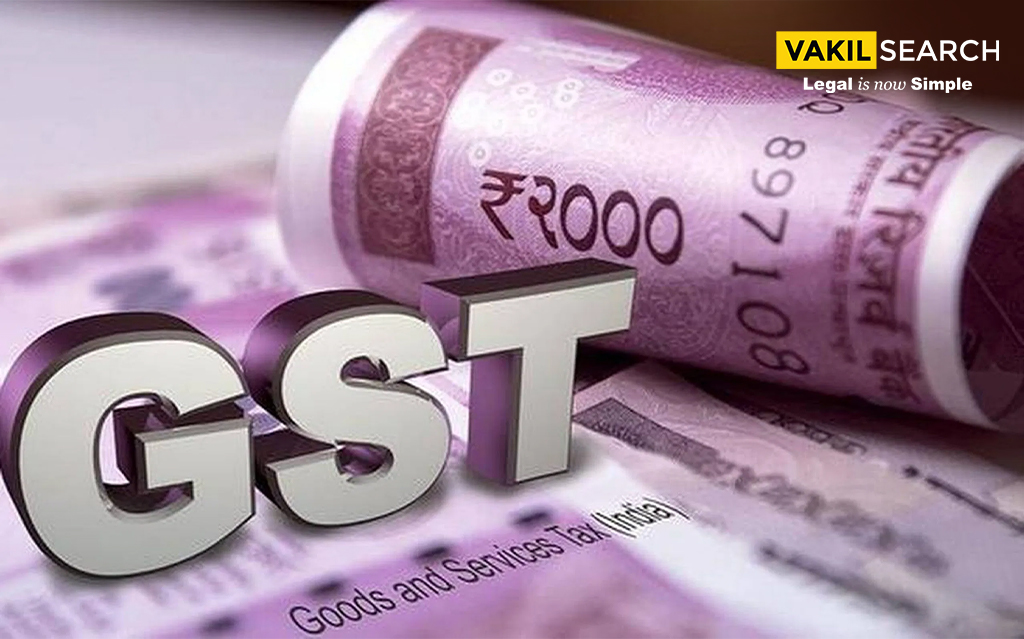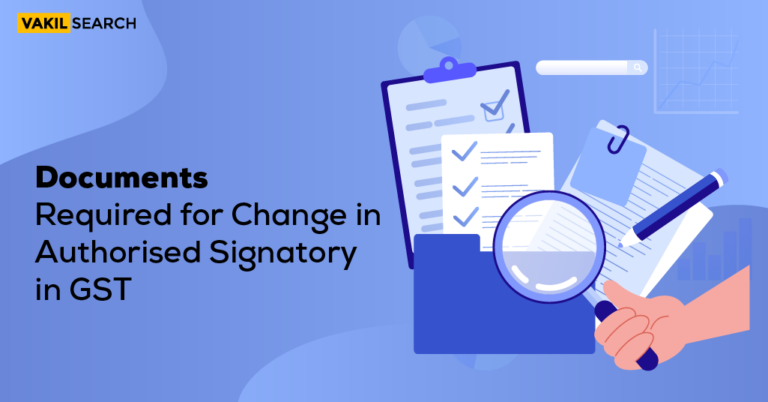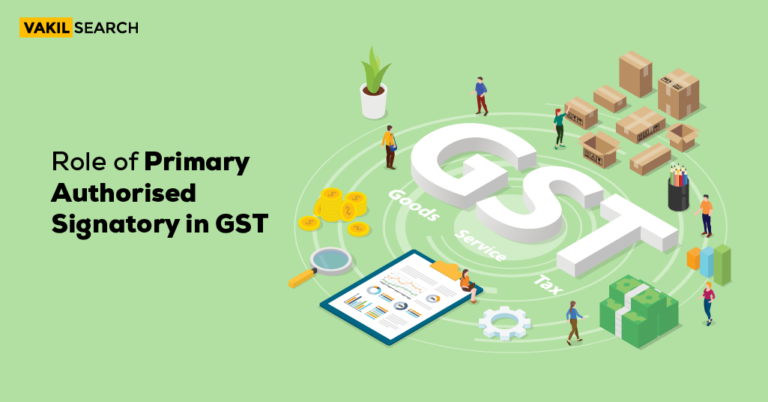The Goods and Services Tax was implemented to help lower the total compliance burden on taxpayers and streamline the tax collection process. The government has revised its GST laws and regulations throughout time to ensure that they stay up-to-date.
The introduction of the Goods and Services Tax significantly changed the taxation system in India. Implementation of the GST regime helped taxpayers by reducing compliance and eliminating double-taxation.
In many ways, GST has transformed India’s taxation system and economy by making it more efficient and technology-driven. Over the years, the government has made amendments to laws and regulations concerning the GST. Such moves have helped the government support Indian businesses and adapt to the times. In this article, we will talk about some guidelines which exempt MSMEs from new GST rules.
New GST Rule Introduced
The government introduced a new rule under the GST regime regarding the payment of liabilities. As per this new guideline, businesses have to pay at least 1% of their GST liabilities in cash. However, micro, small, and medium businesses, which fall under the MSME category, have been exempt from following this new rule.
This is so because the new guideline has a threshold limit of ₹6 crores. The central board of indirect taxes and customs was responsible for enacting this change.
The new rule restricts the usage of the input tax credit when discharging GST liability. The limit set for the use of ITC is 99%, leaving the last 1% payment for the dealer. The primary reason for enacting this move is to prevent fake invoicing to misappropriate ITC.
Applicability of New Rule
To ensure that honest taxpayers and small businesses do not face the brunt of this new rule, the CBIC has put in place certain exemptions. They announced that the new rule will not apply to entities that have collected at least ₹1 lakh as income tax within the last two years.
Additionally, the rule will also exempt registered businesses that have received refunds worth at least ₹1 lakh in the previous fiscal year. These refunds may be as a result of export trade as per the official notification. Government departments, public sector undertakings and local authorities will not have to proceed as per the new guidelines.
Further Notification By the CBIC
Any business that runs for-profit will have to provide minimum value addition to the government. In some instances, businesses claim large amounts of fake credit resulting in zero tax payment as cash proceeds.
It is to prevent such mishaps and misdemeanours that the CBIC has implemented the new rule. The amendment will help in regulating and limiting the submission of fake invoices by businesses. Such companies misrepresent their financial status and try to pass off as high turnover businesses. After such companies misuse their ITC claims to settle their liabilities, they flee resulting in several issues for the authorities.
- The new rule came to be after careful and thorough deliberation by several groups and advisory boards, such as the GST: https://services.gst.gov.in/services/login law committee
- All these agencies have been looking to implement methods that will prevent, regular and evaluate fake invoices that lead to ITC misappropriation
- The government launched a countrywide program in November to bring such fraudsters to justice
- They arrested over 175 such miscreants as a part of this continuing drive and have booked more than 1,800 cases against 8,000 fake entities.
Impact of New GST Rule
Small and Medium Enterprises (SMEs) have been the driving force behind the growth of the Indian economy for many years. This fact is reinforced by the presence of approximately 3 million SMEs in India, which collectively contribute nearly 50% of the country’s industrial output and 42% of its total exports. Given India’s status as a developing nation with diverse demographics, SMEs have emerged as the primary employment generators, fostering balanced development across various sectors.
Now, let’s explore the potential implications of the Goods and Services Tax (GST) on Small & Medium Enterprises. The passing of the GST Bill has been warmly welcomed by the industry, as this long-pending reform was previously hindered by political deadlocks. To understand its impact on SMEs, it is crucial to first grasp how GST will expand the taxpayer base.
Previously, manufacturers with a turnover of ₹ 1.5 crore or less were exempt from complying with excise duty regulations. However, with the consolidation of all State and Central level taxes under GST, manufacturers with a turnover of ₹ 20 lahks (for others) or ₹ 10 lahks (for Special category states) or more will now be obligated to adhere to GST regulations and procedures. Additionally, all GST-related compliance processes, including Registration, Payments, Refunds, and Returns, will exclusively take place through online portals. This shift eliminates the need for SMEs to engage with department officers for these compliance matters, which have been perceived as a cumbersome aspect of the current tax system.
Below, we present a high-level analysis of the potential impact of GST on small and medium businesses in India.
|
Compliance Procedure |
Advantages |
Disadvantages |
| Registration | – Online registration ensures timely receipt of the registration certificate and reduces bureaucratic interactions. | – Some SMEs may lack the technical expertise to handle online systems, leading them to rely on intermediaries for registration, which adds to their registration costs. |
| Payment | – Electronic compliance promotes transparency and lowers the overall compliance cost. | – SMEs must maintain funds as electronic credit with the tax department, which could cause liquidity issues. |
| Refund | – Electronic refund procedures expedite the process and improve liquidity for SMEs. | – Refunds can only be claimed after filing relevant returns and are contingent on the compliances of the supplier and their rating. |
| Returns | – All returns are filed electronically, with automatic adjustment of input tax credit and tax liability based on these returns. | – SMEs must file a minimum of thirty-seven returns each financial year, necessitating additional resources and increasing the overall compliance costs. |
Undoubtedly, GST’s primary objective is to expand the taxpayer base, particularly encompassing SMEs, which in turn will impose additional compliance responsibilities and associated expenses on them. However, in the long term, GST will render these SMEs more competitive by creating a level playing field with larger enterprises. Additionally, Indian SMEs will be better positioned to compete with foreign rivals emanating from low-cost regions like China, the Philippines, and Bangladesh.
Before registering for GST, use our GST calculator to calculate the precise amount of GST that must be paid.
The new rule will help flush out the following type of entities and taxpayers;
- Risky and suspicious dealers
- Entities that use massive amounts of fake credit
- Entities that make no cash tax payment
- Dummy companies that claim fake ITC
- Companies that are part of a multi-layer fake credit flow.
If you have any further queries regarding the new GST rules or want expert guidance on managing your taxes, feel free to reach out to Vakilsearch. We have a team of legal experts and lawyers who can help you manage and plan your taxes efficiently. Vakilsearch also provides a slew of services related to tax management, GST advisory and tax and compliance. So, what are you waiting for? Partner with us, and ensure that your company always stays on the right side of the law!
Latest Update
The most recent classification system for MSMEs departs from the previous approach, which relied on plant and machinery or equipment investment. Instead, it now relies on business turnover. This revision aims to enhance the turnover limit for each category and lighten the compliance burden for MSMEs.
Under the new classification system, MSMEs are categorized into four groups: micro, small, medium, and enterprises, based on their annual turnover.
|
MSME Category |
Turnover Limit (Annual) |
| Micro-Enterprise | Up to ₹ 5 Crores |
| Small Enterprise | Up to ₹ 50 Crores |
| Medium Enterprise | Up to ₹ 250 Crores |
Significantly, the new MSME classification system has raised the turnover limit for micro-enterprises nearly fivefold, and for small enterprises, it has increased tenfold. This substantial increase offers greater flexibility and inclusivity for businesses, fostering a business-friendly environment and providing incentives for the growth and expansion of MSMEs in India.
Background of the New GST Return Filing System
The New GST Return System was introduced as a trial in July 2019, and it will be fully implemented in April 2020 (previously October 2019). The transition will be carried out in phases, allowing users to become familiar with the new return system’s annexure forms.
The transition plan is as follows:
- From July to September, taxpayers will continue filing GSTR-1 and GSTR-3B returns under the current system.
- Starting in October 2019, large taxpayers will file GST ANX-1 instead of GSTR-1, while GSTR-3B filing will continue until November 2019. Small taxpayers will use PMT-08 instead of GSTR-3B to pay taxes.
- From December 2019, large taxpayers will begin filing GST RET-01, the main return under the new system. Small taxpayers will file their first GST RET-01 for the quarter of October-December 2019
FAQs
Is GST applicable for MSME?
Yes, GST is applicable for MSME.
Who is not eligible for MSME?
Individuals are ineligible for MSME registration. However, any proprietorship, partnership business, corporation, trust, or society with investments below ₹ 50 crore and annual revenue less than ₹ 250 crore can avail MSME registration.
Are MSME exempted from tax?
Yes. Under Section 80J of the Income Tax Act, MSMEs with a turnover of up to ₹ 250 Crores qualify for income tax exemption.










